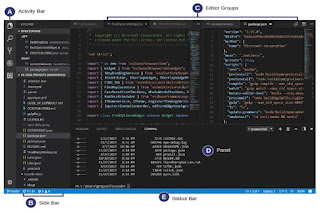Financial Market Risk - Quantitative Aplied Methods - Measuring VaR Aproach
VaR
[NOTAS - WORK IN PROGRESS]
Specific applied ilustration
Cash Flow
Historical perspective of VaR
Historical simulation: These lookback periods typically range from 6 months to 2 years.
Aplications (31-36)***
- Market Risk limits
- Calibration (Calibrating valuation and risk models)
- Performance Valuation
- Reporting
Needed Statistics for Characterizations (Empirical properties)
- Changes
- Return of a portafolio
- the return on a portfolio, , is the weighted sum of N underlying returns.
-
- Modeling
- Volatility modeling
- Random walk
- Stationary/mean reverting
- Homocedasticity/Heterocedastic (low and high volatility periods)
- Independence (autocorrelation by lag days)
- Box-Ljung (BL) statistics
- Having documented the failure of the normal distribution to accurately model returns, researchers started looking for alternative modeling methods, which have since evolved into two classes: unconditional (time-independent) and conditional distributions (time-dependent) of returns.
- models from this both classes generate data that possess fat tails.
- Distribution
- Using percentile to measure market risk
- a percentile corresponds to both a magnitude and an exact probability.
- Market risk is often measured in terms of a percentile (also referred to as quantile) of a portfo- lio’s return distribution.
- When we speak of percentiles they are often of the percentiles of a standardized distribution.
-
- One tail and two tailed confidence intervals
- Random-walk
- Summary results
Estimation and Forecast
Forecast of variance and covariance to forecast
a portfolio’s change in value over a given horizon.
This is a methodology for forecasting the parametes of the multivariate conditional normal distriburion, variances and covariances.
The reazon to forecast of variance and covariance is to forecast a portfolio’s change in value over a given horizon.
- Implied vs Historical information (models)
- Implied volatility is based entirely on (capture market) expectations given a particular option pricing model.
- GARCH models are historical based, some autors conclude that this forecasts outperform implied volatility forecasts.
-
- Forecasting
- Exponentially weighted moving avergage (EWMA) [ver publicacion "Time series analysis"].
- The EWMA will be more satisfactory, given that when combined with frequent updates, it incorporates external shocks better thath equally weighted monving average, thus providing a more realistic measure of current volatility.
-
- Forecast over longer time horizons.
- Multiple day forecast
- Review of historical observations
- Forecast from implied vs historical information
Risk Modeling
- Market Risk
- Identifying exposure and cash flow
- Mapping cash flow(????)
- VaR
- Monte Carlo
- Scenario generation
- Using the estimate volatility and correlation.
- Portafolio valuation
- Compute portfolio value for each scenario.
- Report result as a portfolio distribution or risk measure.
Data
- Missing data
- Correlation (covariance matrices) and VaR
- Volatilities and correlations
- Nonsynchronous data
- Performance
1 day VaR forecasts (90% two-tail confidence interval)
Return and VaR band
- Return measurement
- Standar deviation mesurement
Assumptions base on historical review of retrun distributions:
- Financial return distributions have “fat tails.” This means that extreme price movements
occur more frequently than implied by a normal distribution. - The peak of the return distribution is higher and narrower than that predicted by the normal distribution. Note that this characteristic (often referred to as the “thin waist”) along with fat tails is a characteristic of a leptokurtotic distribution.


